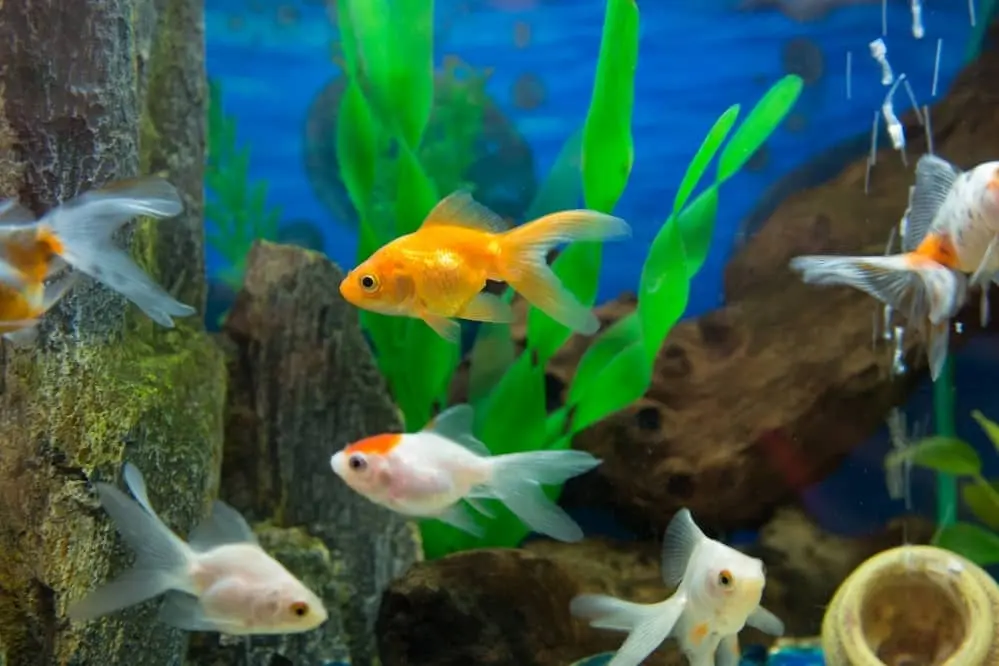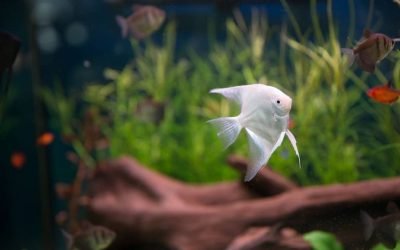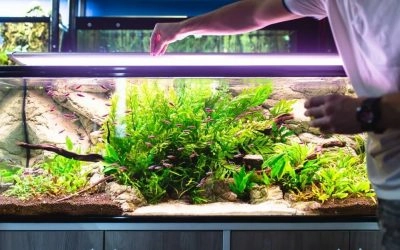How Do I Increase Good Bacteria In My Fish Tank?

Arguably one of the most important aspects of keeping aquatic pets is making sure that you are able to keep their environment habitable. Therefore maintaining and growing beneficial bacteria in aquarium should be one your top priority.
Listed below are methods to maintain and grow good bacteria in your tank.
Warm Water Temperature
Optimal range of temperature for beneficial bacteria is between 18-29 degree celsius (65-85 degree Fahrenheit). Bacteria are more active in warmer temperature than in cold temperature so it is better to keep temperature at the higher end of the spectrum for bacteria growth. At 65 degree Fahrenheit, growth of bacteria will slow down by 50%. It will slow down even further at lower temperature. For example, at around 50 degree Fahrenheit, growth of bacteria will be 75% less and at approximately 40 degree Fahrenheit or below, growth of bacteria will stop.
There are two important things to remember here.
Don’t let temperature of water to surpass 35 degree celsius (95 degree Fahrenheit) because bacteria will die. Death of beneficial bacteria means spike in toxic ammonia.
If the temperature is too high for fish then quarantine the fish in hospital tank first. Reintroduce them back into main tank after completion of nitrogen cycle and adjust temperature of water for your fish.
pH Level of Water
Like most microbes, beneficial bacteria prefer neutral pH for growth. Most microbes stop growing at pH of 5.0 – 4.6. Therefore if your tank water is acidic – below pH of 6.5, it will negatively impact the growth of nitrifying bacteria – Nitrosomonas and Nitrobacteria (good bacteria).
Nitrosomonas ( converts ammonia to nitrites ) – optimal pH range is approximately 7.0 – 8
Nitrobacteria ( converts nitrites into nitrates ) – optimal pH range is approximately 7.5 – 8
Nitrifying bacteria are very sensitive pH level so if you want to increase good bacteria in your tank then try to maintain an optimal pH range. Drop in pH level stresses both fish and good bacteria.
Dissolve Oxygen Concentration
Just like your pet fish, beneficial bacteria also needs oxygen to survive. They are obligate aerobic organisms and need oxygen to breakdown ammonia; therefore, if dissolved oxygen drops to 2.0 mg/L (2 ppm) or less, nitrification ceases.
Nitrification is a microbial process in which Nitrosomonas converts ammonia into nitrite and then Nitrobacteria converts nitrites to nitrate during nitrogen cycle.
It is important to remember that as number of good bacteria grows, oxygen in water will deplete, as a result your fish will suffer. To maintain appropriate oxygen level in fish tank READ How do I increase Oxygen in My Fish Tank? 7 Simple Tips
Absence of Light
Light can inhibit growth of good bacteria particularly Nitrobacteria because they are light sensitive. They are especially sensitive to blue and ultraviolet light (ultraviolet lights are used for killing bacteria). This bacteria behavior makes filter a preferred area to colonize because it provides dark environment.
Although light can impact bacteria activity, do not cut back on fish exposure to aquarium light. If fish don’t get appropriate amount of light, it can stress them.
Don’t keep your aquarium near window or any area of room where it can get direct sunlight.
Hard Surfaces
Good bacteria colonizes not just filter media (ceramic rings, filter floss, sponge, etc) but any hard surfaces submerged in fish tank like substrate, aquarium decor,rock, inside wall of tank and even plants. So don’t forget to add decor or rock inside your tank. This will not only provide place for your fish to hide and rest but also surface area for good bacteria to grow.
GH (General Hardness) and KH (Carbonate Hardness)
For the growth of good bacteria, it is essential that tank water has GH and KH of at least 6 dGH (degrees of general hardness) or 107.2ppm (part per million). 1 dGH is approximately 17.9 PPM
GH measures concentration of magnesium and calcium in water
KH measures concentration of carbonates and bicarbonates in water
The process of sequential oxidization of ammonia to nitrite and nitrate by beneficial bacteria lowers pH of water because both nitrite and nitrate are acidic. In the absence or low level of KH, these acids will not be neutralize, making tank water acidic. This will inhibit good bacteria growth, as mentioned earlier optimal pH range for nitrifying bacteria is 7.0 – 8.0.
Overstock
As nitrifying bacteria converts ammonia to nitrites and nitrites to nitrates, they also multiply and grow because ammonia and nitrites provide energy source. While you need ammonia to establish and expand bacteria colonies, you also need to remember that these nitrifying bacteria are sensitive to ammonia. If you have too much ammonia in your tank, it will have reverse effect i.e it will suppress bacteria growth.
This is why do not overstock your fish tank. More fish means more ammonia in tank. Also, if your tank does not have enough bacteria to break down extra waste produced by fish, there will be rise in ammonia level. This will cause fish to die, thus affecting nitrogen cycle.
Maintain filter
Lack of filter maintenance will result in debris accumulating inside it – this means slower water circulation and increment in tank’s bioload, hindering good bacteria growth.
When filter gets clogged, water through filter reduces. This will lead to bacteria colony not getting adequate amount of ammonia, their energy source for growth. If this problem is not addressed promptly, bacteria count will decline due to insufficient food (ammonia).
While aquarium filter should be regularly cleaned and changed when necessary, you should, take every caution not to loose good bacteria while cleaning the filter. It is possible to completely wipe off entire bacteria colony if you are not careful.




0 Comments